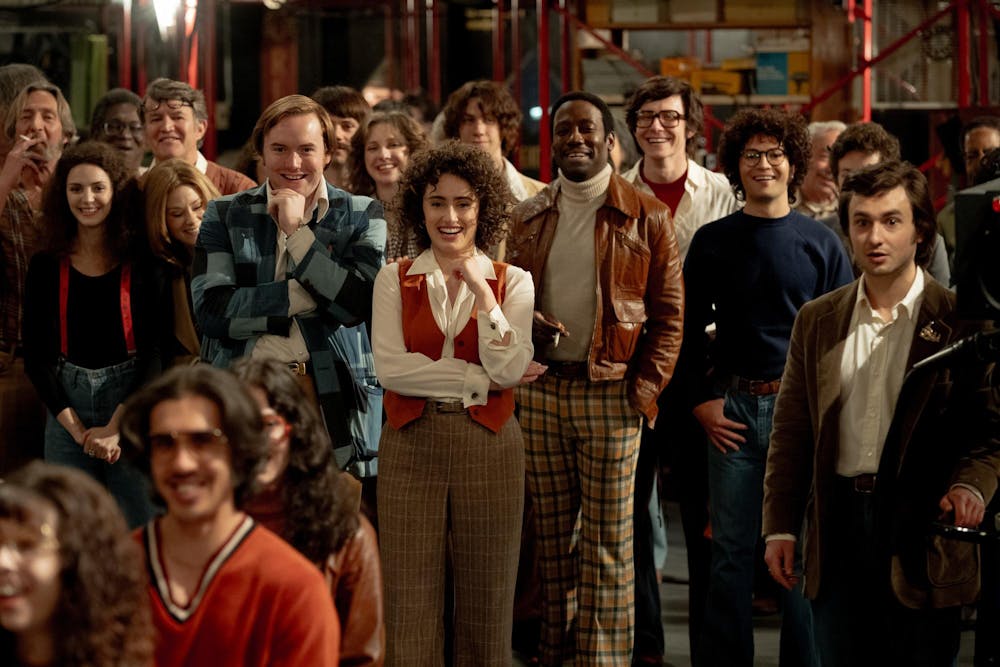My first real introduction to “Saturday Night Live” was in 2014 as I began middle school. In a class titled “Leadership,” each student had to pick an influential figure’s name out of a hat and make a presentation on what made that person special. The name I picked was Gilda Radner. Radner, one of the original cast members of “Saturday Night Live,” became a role model for me quite quickly after. In a sea of Amelia Earharts and Susan B. Anthonys, I was excited by this new name and the challenge it would bring me. The more I learned from interrogating my family and watching every “Saturday Night Live” clip I could, the more I fell in love with Radner. In my presentation, I described her as “zany, charming and unapologetically herself”.
As a young person in the arts, I loved that I could look up to this comedic legend. She was one of my first forays into what it meant to be a confident woman. Her 1978 skit with Steve Martin, titled “Dancing in the Dark,” inspired me to hone my silliness and embrace my uncoordinated nature. It is that delightful humor that has inspired decades of women from Tina Fey to Maya Rudolph. So, when it was announced that Sony had ordered a film based on the first “SNL” broadcast, I was thrilled to revisit that era.
The 85 minutes before “SNL” aired for the first time in 1975 were absolute chaos. Lights were falling, doors weren’t opening, Chevy Chase and Jim Belushi were hurling insults and ashtrays. Amidst all this, it was perfectly exciting.
On Oct. 11, 1975, Lorne Michaels was a 29-year-old comedic newcomer attempting to do a live variety show. Michaels is played by the baby-faced Gabriel LaBelle, who expertly steers the narrative hurdle after hurdle. Although he has great dreams for what the show could be, he struggles to answer the question asked by an NBC executive. “What is the show, anyway?”
It’s hard to pinpoint standouts from the film as everyone had their time to shine. My personal favorites were Andrew Barth Feldman, who plays the neurotic writer Neil Levy, and Cory Michael Smith, whose portrayal of Chase is so charming, yet makes you absolutely despise him. I also want to shout out Nicholas Podany, whose Billy Crystal was so accurate, I couldn’t believe Crystal wasn’t actually on the screen.
This is a movie that makes you remember why you love movies. The talent is boundless, and it is a testament to a new generation of Hollywood. I long to see Rachel Sennott, Gabriel LaBelle, Cooper Hoffman, Dylan O’Brien, and Lamorne Morris in every new piece of work. The entire cast’s chemistry was lightning in a bottle, adding to the community aspect that makes the “SNL” cast so dynamic.
The film did a perfect job of capturing the thrilling feeling of “SNL.” With its constant blurred whip pans and frenzied work by handheld cameras, there was not one moment of stillness. Every minute counted as midnight approached.
By the time the film ended, it felt unfinished. Not because it had left things out, but because quite literally the show had to go to air. I was holding my breath the whole time and maybe cried at the very end.
As I watched, I was brought back to my middle school days. I remembered how Gilda Radner’s tenacity lit a creative spark in me. Just as Radner and the cast pushed boundaries back in 1975, “Saturday Night” embodies the love of performing and passion that “SNL” is famous for.
Think “Uncut Gems” for theatre kids. It is a perfect film and an instant classic.






